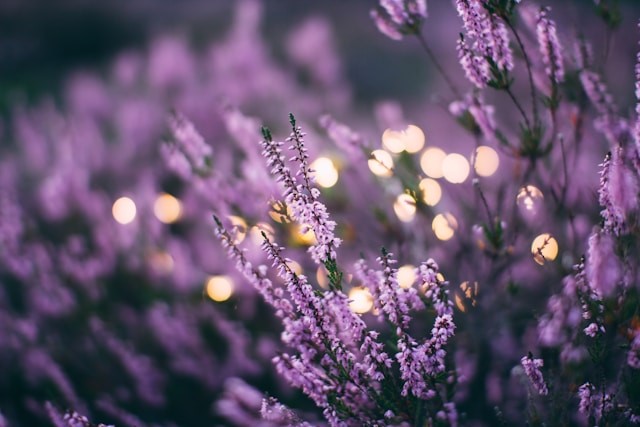
[ad_1]
Lavender is among the most favored plants in the garden and homes. It boasts a calm, soothing color and smell, plus offers a distinct flavor. Learn about growing lavender by visiting
Lavender, “Lavandula,” is native to the Mediterranean but can be found in vast climate ranges today. It has many variations—different sizes, flowers, colors, and a multitude of uses. It’s relatively certain anyone can find lavender suited to their environment.
Lavender is referenced as the “plant of peace” for its purported calming properties. Its flowers are cultivated for essential oils which can be used in hair and skincare. People often use it for flavoring teas, ice cream, and other delicacies.
The challenge with lavender is establishing a healthy plant; however, once you’re able to do that, it becomes virtually self-sustaining. We’ll review a few pro tips for proper care to ensure your plant thrives year after year.
Lavender is a favored herb for the flowers’ fragrance and the oils’ soothing effects. The lavender plant care guide provides tips for growing lavender after it’s established, which is relatively simple, with the plant requiring minimal maintenance.
Fresh lavender has countless uses, whether in recipes, tea, drying for household sachets or crafts, personal care items like skincare lotions and soaps, and more. The herb is healthy for the ecosystem, attracting various pollinators and repelling pests.
Watering lavender
Watering plants is required for optimal health. Roughly once each week, lavender should be watered or when the soil is dry (to the touch). The herb is drought-tolerant, capable of handling dry spells. During these periods, the plant will produce fewer flowers without sufficient watering.
Although too much water can cause root rot, which could kill the plant. When a young plant is just starting, you’ll water more regularly to get the roots established; the added water helps them grow. Once settled in its new environment, watering can slow down.
Soil type
Lavender will grow happily in the right soil. You can create a mix that drains well and is sandy or buy a commercial mix for lavender specifically. For clay-like or heavy soil, add some sand for adequate drainage. The herb prefers its soil to be dry since it is a drought-tolerant plant.
It wouldn’t do well in wet surroundings. A mix that includes sand is vital for a healthy, happy plant.
Fertilizing or not
Lavender is known to be able to thrive in the soil where other plants can’t without fertilizing. The herb requires minimal maintenance for those who might not have superior gardening skills or tend to forget to fertilize for extended periods.
When you want to encourage greater flowering or better growth, fertilizing with a balanced fertilizer once each month is recommended. This is especially important in the spring, as new growth is starting to appear in lavender.
The plant requires a good organic product with phosphorus, nitrogen, and potassium, but it doesn’t require a lot of it. The fertilizer improves the soil quality, giving the herb a pleasant growing environment so it can thrive.
How to harvest
With the multiple uses, including oils, crafting, teas, and so much more, you’ll likely be anxious to harvest the plant to use for many products. The ideal time for harvesting flowers is after the dew evaporates in the morning, before the heat sets in.
The flowers should be in full bloom. The buds are ready to be harvested when they start to turn purple. The stem should be cut roughly an inch beneath the flower’s head when harvesting.
You can harvest as often as twice each week, but you’ll want to leave sufficient flowers that the plant will continue to bloom. Click for details on the height at which lavender can grow.
Drying the flowers

After harvesting, lavender flowers should be dried so that they can be used for various purposes. When drying, the flowers should be tied in batches and hung upside down in a ventilated, cool, dark location. When the flowers are fully dried, the stems should be removed, and the flowers should be stored in airtight storage.
This should be kept in an area away from small children and pets. While lavender is safe for adults to ingest, it’s mildly toxic for kids and animals.
When pets ingest a large quantity of essential oils or if kids eat a portion of the flowers, it’s wise to have a vet or the pediatrician do an exam to ensure there are no adverse effects.
Final Thought
Lavender plants make a lovely addition to the garden, and the flowers have a host of valuable purposes. The herb can be a challenge to establish at first, but once it gets started, it’s relatively easy to take care of with minimal maintenance—little watering and fertilizer. It only asks that you give it plenty of sun and well-draining soil.
[ad_2]